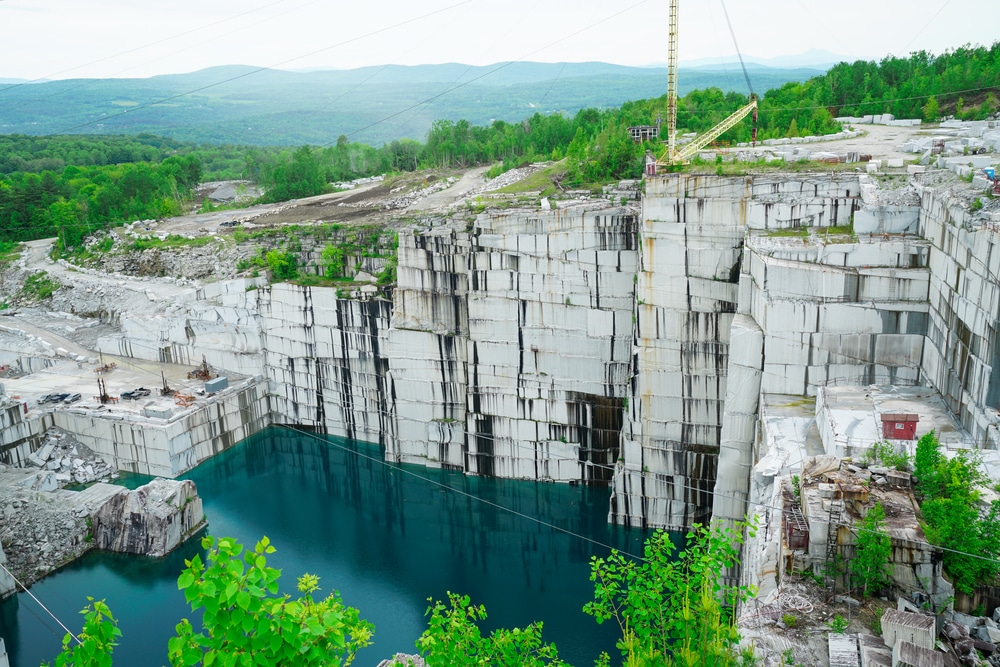Discovering Granite Quarries in South Africa Sector: From Quarry to Work of art
Discovering Granite Quarries in South Africa Sector: From Quarry to Work of art
Blog Article
Unveiling the Mysteries of Granite Quarrying: Where Toughness and Beauty Meet
The world of granite quarrying is a world where the raw stamina of nature assembles with human artistry to develop frameworks that stand the test of time with an air of sophistication. From the depths of quarries to the precise polishing in workshops, the procedure of transforming granite right into architectural marvels is a complex dancing of tradition and advancement. As we peer into the midsts of this ancient craft, we begin to uncover the covert ins and outs that form the extremely significance of our developed setting.
The Beginnings of Granite Quarrying
In the annals of architectural background, the origins of granite quarrying are shrouded in a tapestry of old craftsmanship and geological marvels. Going back to ancient Egypt and Mesopotamia, the extraction of granite from quarries marked the start of a journey that would eventually cause the creation of some of the globe's most legendary structures.
Granite quarrying's roots can be mapped to the skilled artisans that acknowledged the stone's durability and visual appeal. Through a mix of primitive devices and large determination, these very early quarry workers discovered granite blocks that would become the foundation of civilizations.
As human beings progressed, so did the strategies of quarrying granite. The Romans, renowned for their design prowess, developed sophisticated methods for removing granite to create monoliths, temples, and roadways that stood the examination of time.
The tradition of these old quarrying methods proceeds to shape modern design, with granite staying a sign of strength and sophistication in construction projects around the world. (granite quarries in south africa)
Devices of the Quarrying Trade
The evolution of granite quarrying techniques from old human beings to modern-day times highlights the vital role played by the devices of the quarrying trade in shaping the industry's practices. In ancient times, quarrying devices were simple, typically containing knives, hammers, and wedges made from products like bronze or iron. These devices needed significant workforce and time to remove granite blocks from quarries.

Furthermore, the intro of pneumatically-driven devices and high-powered equipment has considerably reduced the physical labor called for in quarrying procedures, improving employee security and productivity. As the quarrying sector proceeds to introduce, the tools of the profession remain at the center of driving development and shaping the future of granite removal.
Removing Blocks of Granite
Making use of precision equipment and progressed methods, the extraction of granite blocks from quarries has ended up being a sophisticated procedure in the modern-day quarrying sector. The preliminary step involves recognizing the location and dimension of the granite deposit to figure out the most reliable extraction technique. Once an appropriate website is chosen, the removal procedure begins with the boring of openings for the click for more info placement of nitroglycerins. Controlled blowing up techniques are after that used to break apart the granite into manageable sections.

Sprucing Up and Ending Up Strategies
To accomplish a remarkable surface area on granite blocks, experienced craftsmens employ a series of careful sprucing up and ending up strategies. After the preliminary removal and shaping procedures, the granite obstructs go through a thorough sprucing up stage to improve their natural appeal and resilience.
In addition to sprucing up, ending up methods are applied to more improve the granite's look. These methods might include flaming, sharpening, or brushing, each offering one-of-a-kind textures and finishes to fit different visual choices. Flaming, as an example, entails exposing the granite surface to heats to produce a rough, textured surface, ideal for exterior applications where slip-resistance is crucial. Developing, on the other hand, provides a matte coating that is smooth to the touch, perfect for interior countertops and floor covering. By thoroughly selecting and applying these brightening and completing methods, artisans Click This Link can transform raw granite blocks into beautiful items that showcase both stamina and style.

Ecological Impact and Sustainability
With the expanding focus on ecological awareness in the sector, granite quarrying practices are progressively inspected for their impact on all-natural resources and lasting sustainability. Furthermore, the transport of granite from quarries to refining centers generates carbon discharges, additionally contributing to environmental deterioration.
To reduce these impacts and guarantee sustainability in granite quarrying, market stakeholders are adopting various procedures. Executing advanced modern technologies to lower energy usage and water use, recovering quarried land for ecological remediation, and advertising liable sourcing methods are some methods being used. In addition, certifications such as the Forest Stewardship Council (FSC) and the Management in Energy and Environmental Layout (LEED) help customers determine environmentally friendly granite items.
Verdict
In final thought, granite quarrying is a process that requires specialized tools and strategies to remove blocks of granite and brighten them to a high degree of coating. While the environmental influence of quarrying can be considerable, efforts are being made to boost sustainability practices in the sector. On the whole, granite quarrying is a fragile equilibrium between harnessing the strength and beauty of this all-natural stone while decreasing its effect on the setting.
Report this page